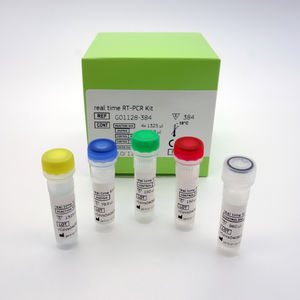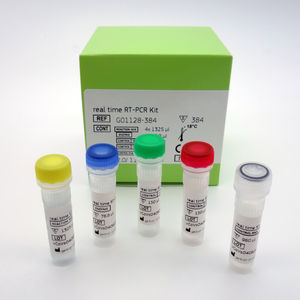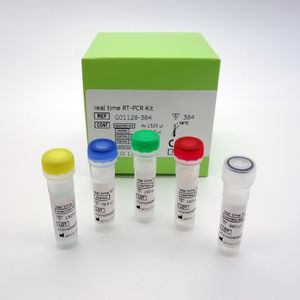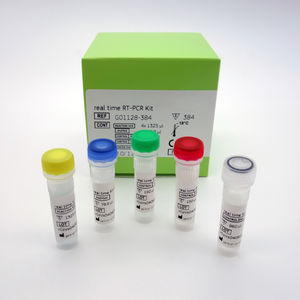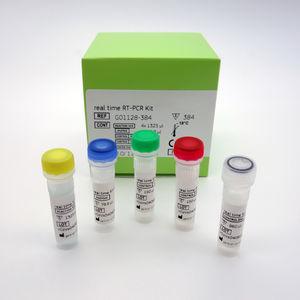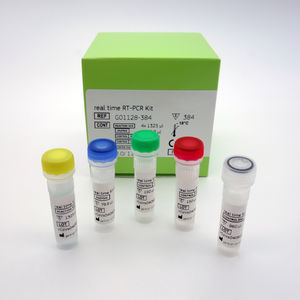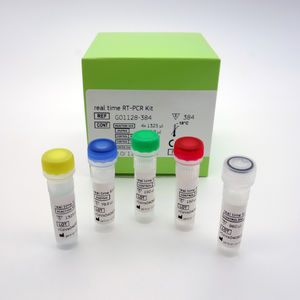
- Laboratory
- Laboratory medicine
- Solution reagent
- LINEAR CHEMICALS
Solution reagent kit diarellaMTBRT-qPCRfor DNA qualificationliquid
Add to favorites
Compare this product
Characteristics
- Type
- solution
- Applications
- RT-qPCR, for DNA qualification
- Format
- liquid
- Tested parameter
- for genes
- Micro-organism
- Mycobacterium tuberculosis, Mycobacterium bovis, Mycobacterium microti
- Method
- enzymatic
- Storage temperature
Min.: -8 °C
(18 °F)-18 °C
(-0 °F)Max.: 2 °C
(36 °F)
Description
The diarellaMTB real time PCR is an assay for the detection of the DNA of MTB in clinical specimens.
2 Pathogen Information
The Mycobacterium tuberculosis forms a complex with other higher related bacteria called the M. tuberculosis complex that consists of 6 members: Mycobacterium tuberculosis and Mycobacterium africanum, which infect humans; Mycobacterium microti, which infects vole; Mycobacterium bovis, which infects other mammalian species as well as humans; M. bovis BCG, a variant of Mycobacterium bovis and Mycobacterium canettii, a pathogen that infects humans. Tuberculosis (TB) is a disease caused by infection from the bacteria M. tuberculosis. If not treated properly, TB can be fatal. Currently, the World Health Organization estimates that over 13 million people have TB and about 1.5 million die each year from the disease. Tuberculosis most commonly affects the lungs (pulmonary TB). Patients with active pulmonary TB usually have a cough, an abnormal chest x-ray, and are infectious. TB can also occur outside of the lungs (extrapulmonary), most commonly in the central nervous, lymphatic, or genitourinary systems, or in the bones and joints. Tuberculosis which occurs scattered throughout the body is referred to as miliary TB.
Extrapulmonary TB is more common in immunosuppressed persons and in young children. When a person with active pulmonary TB coughs, sneezes, or talks, the bacteria that cause TB may spread throughout the air.
If another person breathes in these bacteria, there is a chance that they will become infected with tuberculosis. Repeated contact is usually required for infection (1). However, not everyone infected with TB bacteria becomes sick.
Catalogs
No catalogs are available for this product.
See all of LINEAR CHEMICALS‘s catalogsRelated Searches
- Assay kit
- LiNEAR solution reagent
- Blood assay kit
- LiNEAR molecular biology reagent
- Immunoassay assay kit
- Plasma assay kit
- Infectious disease detection kit
- LiNEAR rapid blood test
- LiNEAR protein reagent
- LiNEAR diagnostic reagent
- LiNEAR laboratory reagent
- Rapid lateral flow test
- Immunoassay rapid diagnostic test
- LiNEAR cassette rapid test
- LiNEAR rapid virus test
- LiNEAR rapid serum test
- LiNEAR rapid plasma test
- Histology reagent kit
- LiNEAR medium reagent
- LiNEAR rapid infectious disease test
*Prices are pre-tax. They exclude delivery charges and customs duties and do not include additional charges for installation or activation options. Prices are indicative only and may vary by country, with changes to the cost of raw materials and exchange rates.












